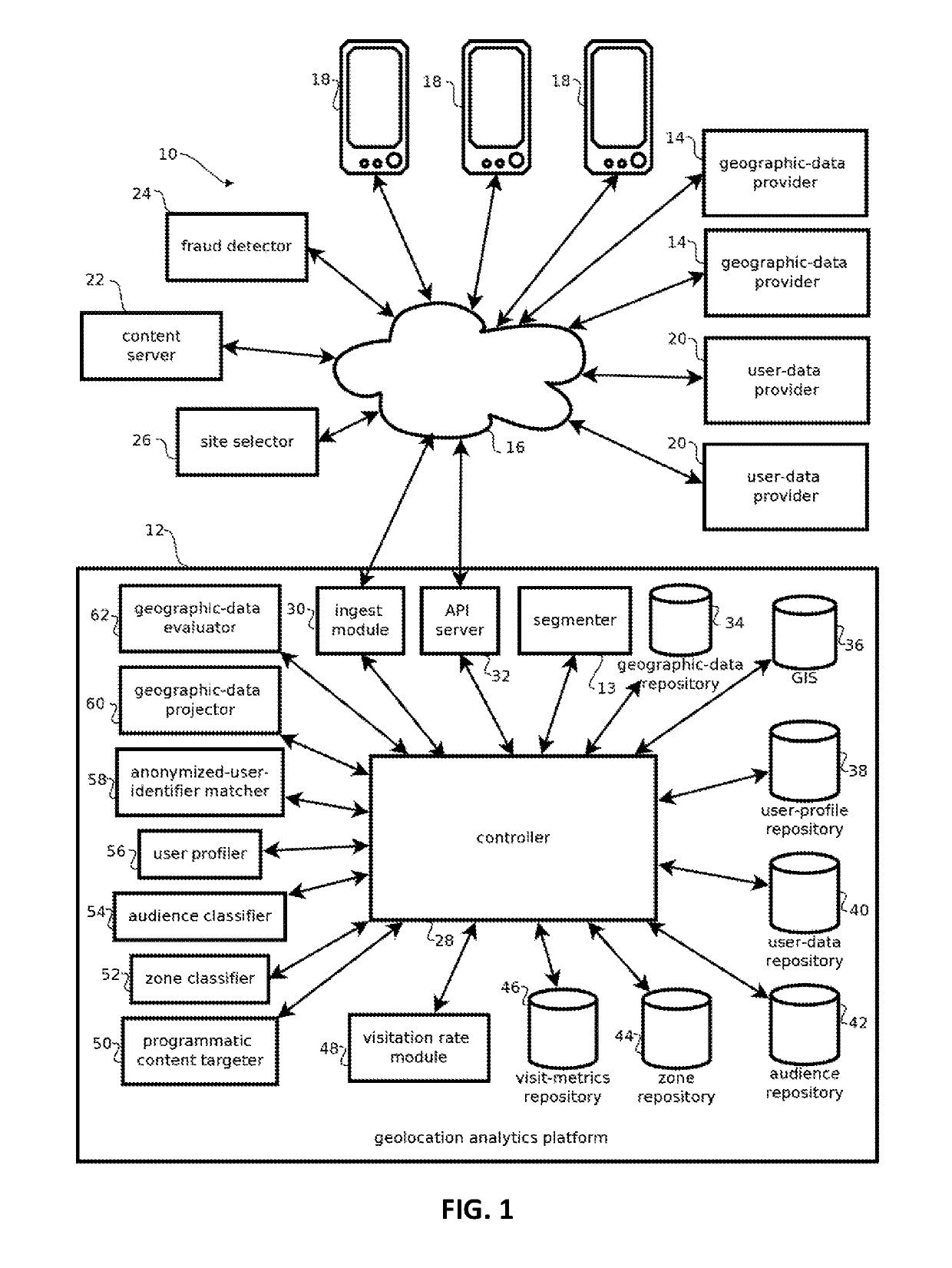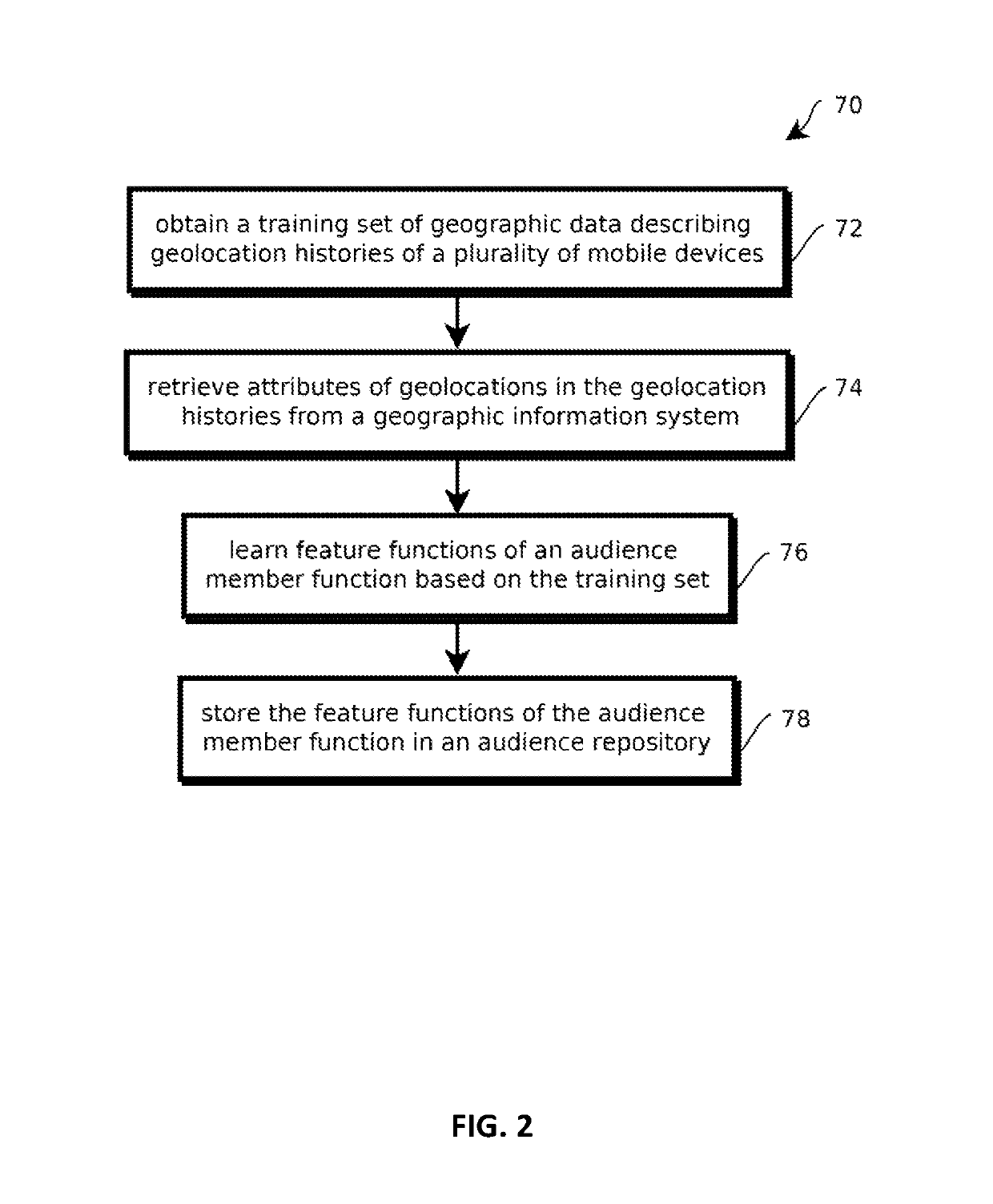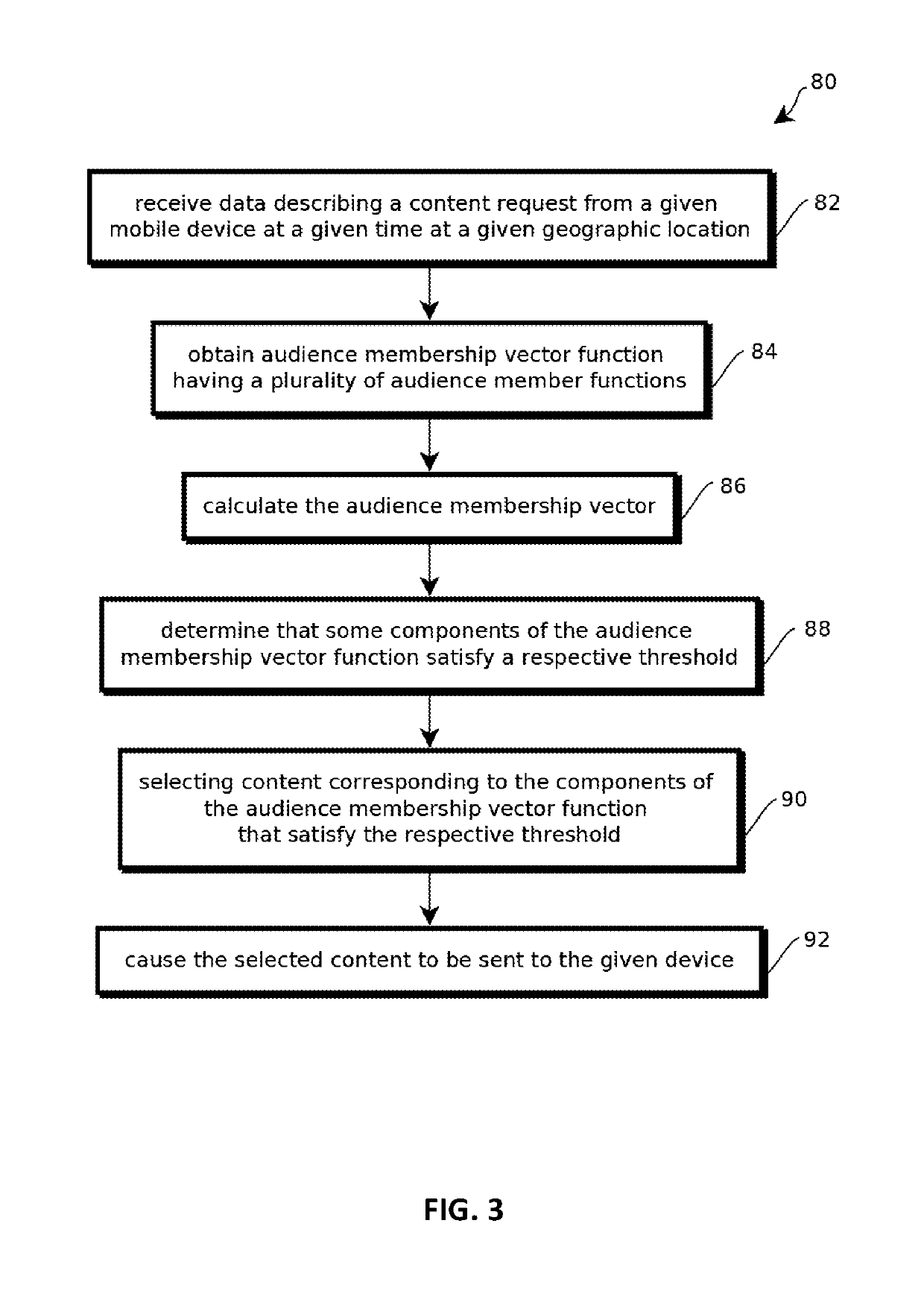Inferring consumer affinities based on shopping behaviors with unsupervised machine learning models
a machine learning model and consumer affinity technology, applied in the field of computer systems, can solve the problems of insufficient specificity of existing systems, difficult to find more precise descriptors of audiences, and poor correlation between user's current location and behavior
- Summary
- Abstract
- Description
- Claims
- Application Information
AI Technical Summary
Benefits of technology
Problems solved by technology
Method used
Image
Examples
embodiment 1
2. The method of embodiment 1, wherein determining more than 5 psychographic segments of consumers comprises: clustering the first set of consumer-behavior vectors based on pairwise distance in a parameter space defined by attributes of the consumer-behavior records.
embodiment 2
3. The method of embodiment 2, wherein clustering the first set of consumer behavior vectors comprises determining that at least some vectors have more than a threshold number of other vectors within a threshold distance in the parameter space.
embodiment 3
4. The method of embodiment 3, wherein determining more than 5 psychographic segments of consumers comprises: selecting N cluster centers for N candidate clusters from among the first set of vectors, where N is an integer greater than or equal to 5; assigning vectors in the first set to the candidate clusters based on distance from the respective cluster center; and iteratively updating the cluster centers to reduce an aggregate measure of distances from the vectors to cluster centers and re-assigning the vectors to updated clusters until less than a threshold amount of vectors change clusters between iterations.
5. The method of embodiment 1, wherein determining more than 5 psychographic segments of consumers comprises: learning at least one latent variable model with a mixture model of the first set of consumer-behavior vectors.
6. The method of embodiment 1, wherein determining more than 5 psychographic segments of consumers comprises: forming a 2 or higher dimensional lattice of n...
PUM
 Login to View More
Login to View More Abstract
Description
Claims
Application Information
 Login to View More
Login to View More - R&D
- Intellectual Property
- Life Sciences
- Materials
- Tech Scout
- Unparalleled Data Quality
- Higher Quality Content
- 60% Fewer Hallucinations
Browse by: Latest US Patents, China's latest patents, Technical Efficacy Thesaurus, Application Domain, Technology Topic, Popular Technical Reports.
© 2025 PatSnap. All rights reserved.Legal|Privacy policy|Modern Slavery Act Transparency Statement|Sitemap|About US| Contact US: help@patsnap.com



